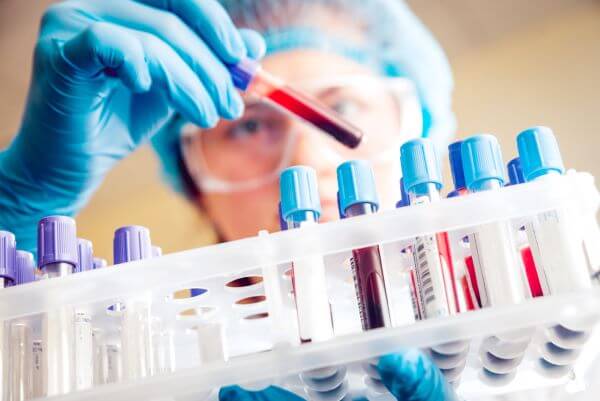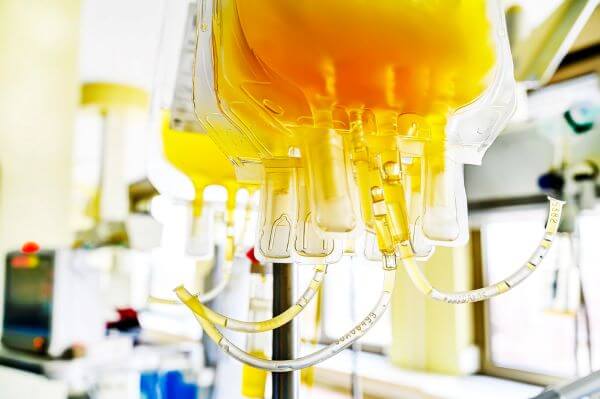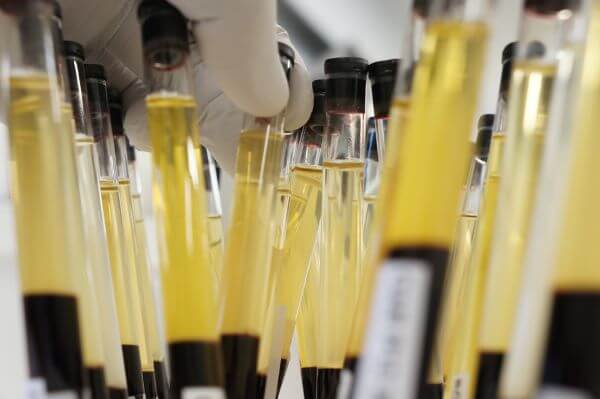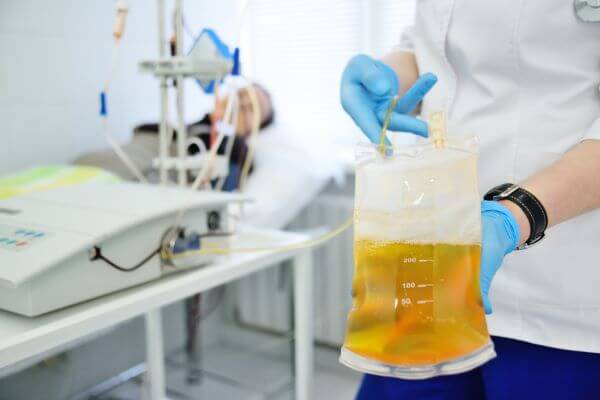Serum and plasma are both liquid components of blood. Both are mainly made up of water, and both contain electrolytes, antibodies, nutrients, waste products, and other proteins. However, blood plasma also contains blood cells and clotting factors, whereas blood serum does not.

The Key Components of Blood
Blood is the red fluid that flows through the human circulatory system, delivering oxygen and nutrients to cells while transporting waste products away. Its key components are:
- Blood cells – Red blood cells carry oxygen; white blood cells are cells of the immune system.
- Platelets – Platelets are tiny cell fragments that form blood clots to stop bleeding.
- Plasma – Plasma is the liquid component of blood.

What is Plasma?
Plasma is a straw-colored liquid that makes up around 55% of total blood content. It consists of approximately 92% water and 8% solids including proteins, electrolytes, antibodies, nutrients, and waste products.
The main role of blood plasma is to deliver oxygen and nutrients to cells while carrying waste products away. As the liquid component of blood, plasma is what keeps blood cells and other blood components moving through the circulatory system while maintaining blood pressure and volume.
Blood plasma also contains coagulants, such as fibrinogen. Coagulants are important for blood clotting, which prevents excessive bleeding in the event of injury. Therefore, blood plasma plays a major role in wound healing; without it, blood cannot clot and bleeding can be life-threatening.

What is Serum?
Blood serum is a component of blood plasma. The two are closely related, so they’re often thought to be the same thing. Serum is a fluid found in plasma, and it contains many of the same solid components as blood plasma (such as electrolytes, antibodies, hormones, and other proteins). However, there is one crucial difference between the two: plasma contains coagulants and blood cells, and serum does not.
Basically, serum is plasma minus the clotting factors.

Extraction of Serum vs. Plasma
Both serum and plasma can be separated from whole blood for medical or experimental uses.
Serum is collected after the blood has been allowed to clot. Once whole blood has been collected, it is left to coagulate at room temperature for 15-30 minutes. Next, the test tube is spun in a centrifuge and the blood clot is removed. The remaining liquid is blood serum.
Plasma is also separated from whole blood using centrifugation. However, an anticoagulant must be added to the test tube first to prevent the blood from clotting. Once the anticoagulant has been added, the sample is spun in a centrifuge. The blood cells and other solid components will fall to the bottom of the tube and the liquid plasma can be collected.

Medical Uses for Blood Plasma
Blood plasma has a wide range of medical uses and can be used to treat people who have suffered from burns, trauma, shock, and other medical emergencies. In cases of severe blood loss, plasma transfusions can be used to increase the patient’s blood volume and help with clotting and may prevent them from going into shock.
Blood plasma is also used as a therapeutic treatment for people with chronic health conditions such as severe liver disease, autoimmune conditions, and hemophilia. Thanks to plasma treatments, people with these conditions can live long and productive lives.

Medical Uses for Blood Serum
Like plasma, blood serum has a variety of medical uses. However, whereas blood plasma is typically used for transfusions, serum is primarily used for medical testing and research.
In terms of medical research, blood serum may be used in DNA testing and cancer therapy studies. It may also be added to cell culture media to support the growth of human white blood cells in the laboratory, which can then be studied and used in experiments. Serum from patients can also be used to test for certain diseases, such as hepatitis, prostate cancer, and Paget’s disease.
Like plasma, blood serum contains antibodies. This means it can be used to produce antiserum, which is serum that contains specific antibodies against a particular pathogen or poison. Antiserum can be used to protect other people against certain illnesses without exposing them to the pathogen that causes it. It can also be used as a treatment for the bites and stings of venomous animals.

